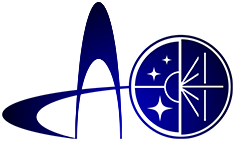

 |
|
|
|||||||||
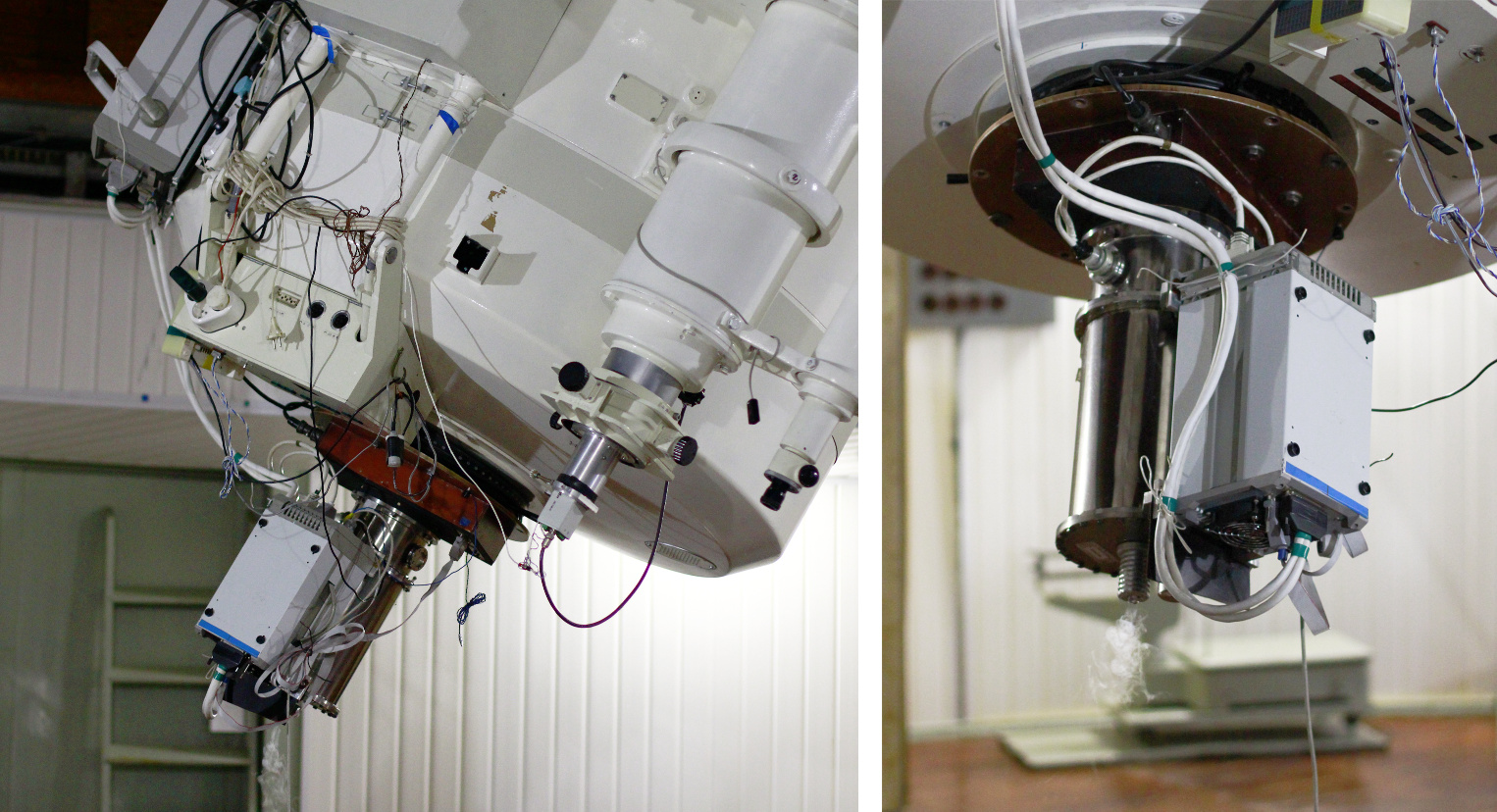
CCD photometer installed in the Cassegrain focus (f/13) of the 1-meter Zeiss-1000 telescope is used to obtain direct images of astronomical objects in the Johnson–Cousins U, B, V, Rc, Ic bands as well as in the integrated light without a filter (3600–10000 Å).
CCD images of astronomical objects allow us to determine their exact positions and form (for extended objects), provide photometry of the objects in different spectral bands with the purpose of the study of spectral energy distribution, and help to solve other problems. A number of same-type measurements, which is a light curve, allow us to trace the development of astronomical events at times from seconds to decades or study the periods of stellar and planetary systems. Direct images significantly complement other data about the object under study, allowing one to form an integral picture necessary for understanding physical processes that are taking place.
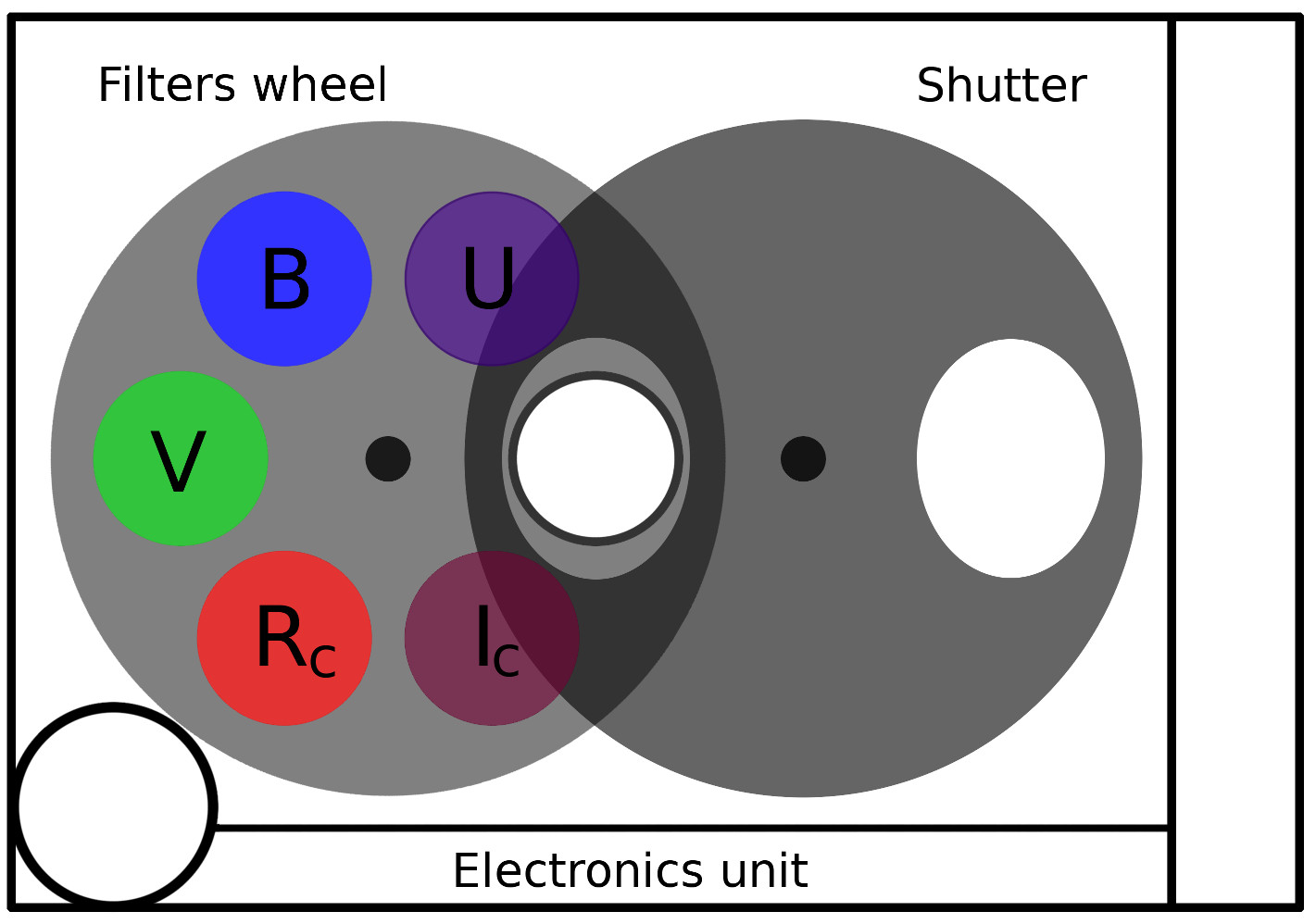
The photometer (Fig. 2) consists of a wheel with 6 slots for filters and a disk shutter, all placed in a light-shielding box. The photodetector with a cryostat and a controller is attached to the bottom side. The design of the device allows one to remotely change the filters, control the shutter and the parameters of the detector, and monitor their condition. A 2048 x 2048 pixel EEV CCD 4240 with the maximum quantum efficiency of 82% (at a wavelength of 4500Å) is used as a detector. The transmission of the photometer for different filters is shown in Fig. 3. The estimation of the accuracy of stellar magnitude measurements is given in Fig. 4.
The characteristics of the photometer coupled with the CCD in use are listed in the table. The occurrence of an interference pattern (fringes) is characteristic for the applied CCD in the red filters (Rc, Ic). Removing this component involves obtaining a series of frames with small shifts of about 20''. In this case the total frame will have a smaller area than the individual ones. The minimum exposure time used in observations is 10 s (due to the inertia of the shutter). This provides background homogeneity over the field of more than 99.7%. The actual maximum time of individual exposures is 600 s (due to the absence of guiding).
The limiting stellar magnitude in the Rc filter reaches: 20m.3 for a 300 s exposure and a seeing of 2"; 22 m.7 for a 3 h total exposure and a seeing of 1".8. All the magnitudes are given in the Vega system.
The technique of observation with the Zeiss-1000 CCD photometer includes preliminary preparation of a list of objects, obtaining calibration frames (bias, flat field, and dark current, if necessary), and observations of scientific objects and standard stars for absolute flux calibration. Data processing is performed using standard algorithms of IRAF, ESO-MIDAS and similar software packages.
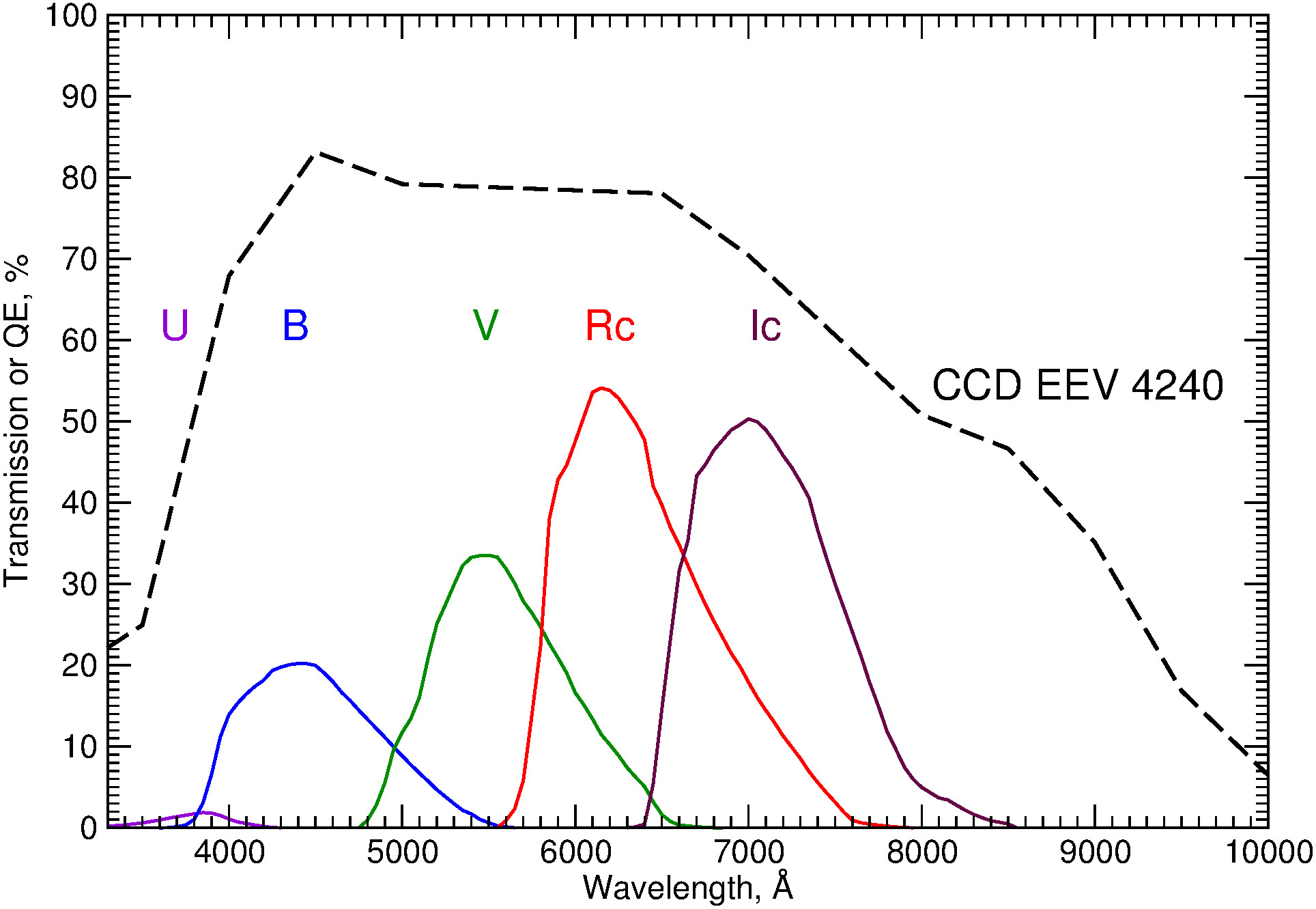
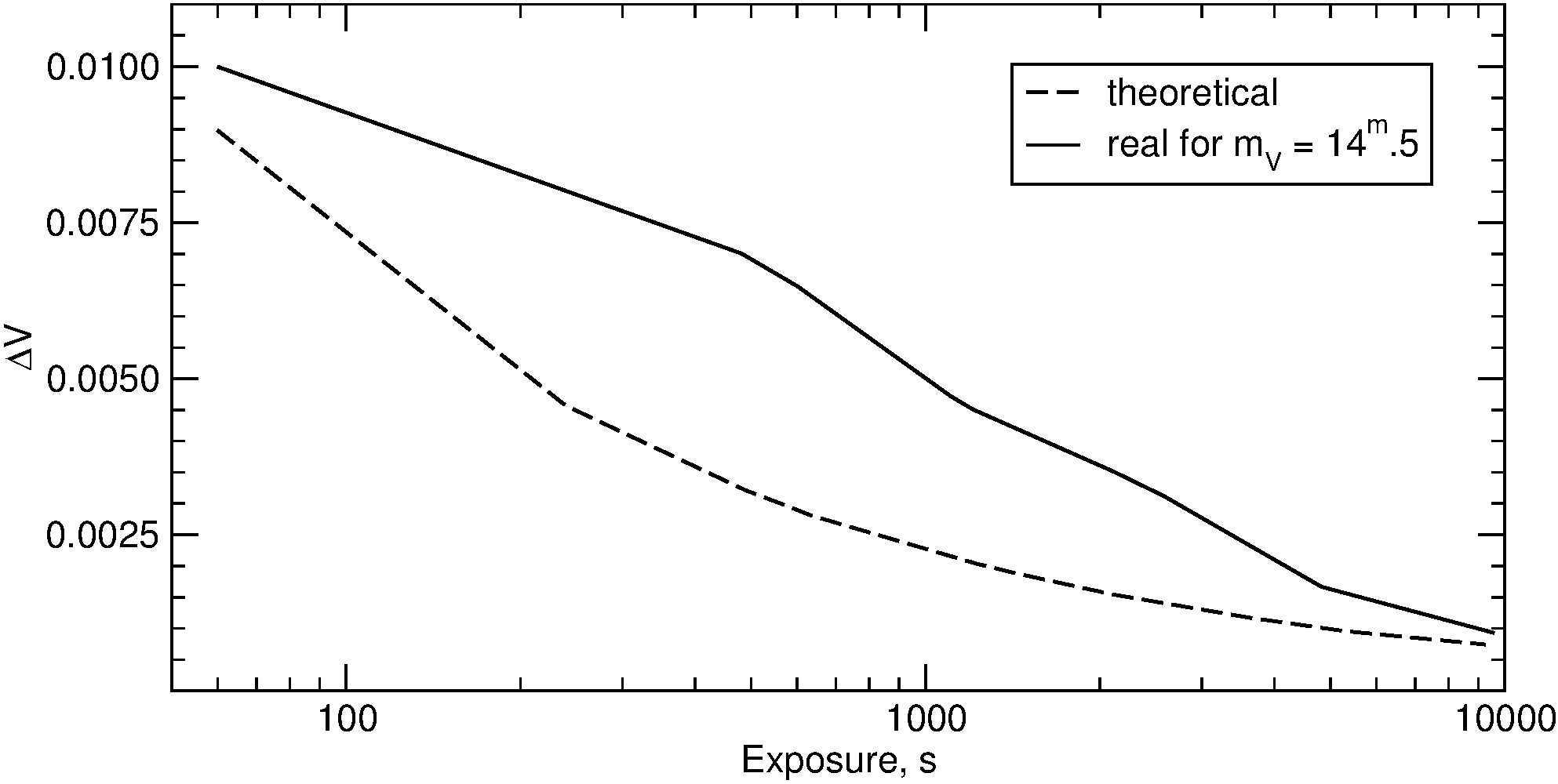
| EEV CCD 42-40 format | 2048 x 2048 pixels | |
| Field of view | 7'.3 x 7'.3 | |
| Scale (without binning) | 0".216/pixel | |
| Photometric system and spectral range |
Broadband Johnson-Cousins filters U, B, V, Rc, Ic,(3600 – 10000 Å) |
|
| Gain factors: | Gain (low) | 2.02 e-/ADU |
| Gain (high) | 0.50 e-/ADU | |
| Readout noise (normal) |
3.3e- | |
| Frame readout speed:: | Without binning (1 x 1) | 85 s |
| With binning 2 x 2 | 28 s | |
| With binning 4 x 4 | 12 s | |
| Exposures of individual frames | 10-600 s | |
| Limiting magnitude (3σ limit): | U, 300 s, seeing = 1".5 | 20m.3 |
| B, 300 s, seeing = 2".0 | 21m.0 | |
| V, 300 s, seeing = 1".8 | 20m.3 | |
| Rc, 300 s, seeing = 2".0 | 20m.3 | |
| Ic, 300 s, seeing = 1".6 | 19m.4 | |
| Rc, 3 h, seeing = 1".8 | 22m.7 |
|